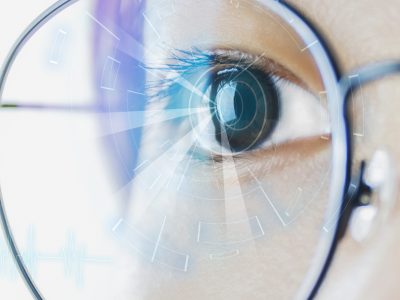Undoubtedly, one of the most demanding and challenging professions is nursing. Nurses work long hours in high-stress environments and are tasked with physically and emotionally demanding responsibilities. This can take a toll on their health, leading to various health problems.
One of the most common health issues experienced by nurses is vision problems. This is because the nature of the nursing profession involves work that makes individuals more susceptible to eye strain, fatigue, and overall deterioration of vision. As such, it is vital to understand the root cause of these vision issues and what can be done to address them.
Reasons why nurses’ vision is getting worse
One of the primary reasons why nurses’ vision is deteriorating is the constant exposure to bright lights and screens in healthcare facilities. Nurses often work long shifts in well-lit hospitals or healthcare facilities, spending significant time looking at computer monitors, medical charts, and other electronic devices. In addition, nursing work often requires nurses to perform tasks that strain their eyes. This includes reading small print on medication labels, monitoring patient vital signs, and performing detailed procedures that require precision and focus. Over time, these activities in such settings can take a toll on a nurse’s vision, leading to a decline in visual acuity and overall eye health.
Another factor contributing to nurse’s worsening vision is the prevalence of stress and fatigue in the nursing profession. Nurses are frequently exposed to high-stress situations, long hours, and physically demanding work, all of which can contribute to eye strain and other vision-related issues. Chronic stress and fatigue can also exacerbate existing vision problems, making it more difficult for nurses to perform their duties effectively.
Furthermore, using personal protective equipment in healthcare settings has also become a significant factor in nurses’ declining vision. Using masks, goggles, and face shields can cause fogging and discomfort, increasing reliance on visual cues and potentially leading to eye strain and fatigue.
Ways that vision issues among nurses can be addressed
Use corrective prescriptions
Correcting refractive errors is the primary purpose of prescription solutions. Chief among these is wearing prescription glasses, which can help a nurse’s visual acuity, allowing them to see more clearly and accurately. From single-vision correction that supports near, immediate, or far-sightedness to progressive-vision correction that corrects various fields of vision in one lens, prescription glasses also come in multiple styles that befit a nurse’s needs. To illustrate, reliable brands like Oakley carry half-rim glasses like Tie Bar 0.5 that may be useful for nurses, as they don’t block too much of their view. Eyeglass lenses can also be enhanced with additional protective properties, such as anti-reflective coatings and blue light filters, which can further protect nurses from the harmful effects of prolonged screen time and artificial lighting.
Another corrective tool available via prescriptions is contact lenses. For those who prefer an eyewear option that does not obstruct peripheral vision or get in the way during physical tasks, contacts are also a great choice. Contact lens brand Acuve has 1 Day Acuvue Moist, which are contacts that provide long-lasting comfort for a day—perfect for nurses working long shifts and safer for healthcare settings as they are disposable. They also offer the same product specialized for those with astigmatism and other refractive errors. These allow nurses to move freely and are less prone to fogging up or getting splattered with fluids, which are common in a medical setting.
Apply workplace adjustments
Providing appropriate lighting in a work environment is vital for every job, but it is especially crucial for nurses. Good lighting is essential for them to be able to carry out their tasks with precision. Lighting should be adjustable with the use of specialized lighting devices to accommodate the various needs of nurses. Another necessary workplace adjustment is the provision of magnification tools to assist nurses in carrying out tasks involving small print materials. In addition to the standard magnifying glasses, electronic magnification devices can be integrated into nurses’ workflow to enhance their ability to see important information.
Besides environmental and technological adjustments, it is also essential for healthcare facilities to provide nurses with appropriate ergonomic workstations. Simple additions like the Branch Ergonomic Chair, which offers a variety of adjustments, would do wonders to provide nurses with more comfort. Monitor stands and other useful accessories can also help nurses maintain proper posture and reduce eye strain.

















